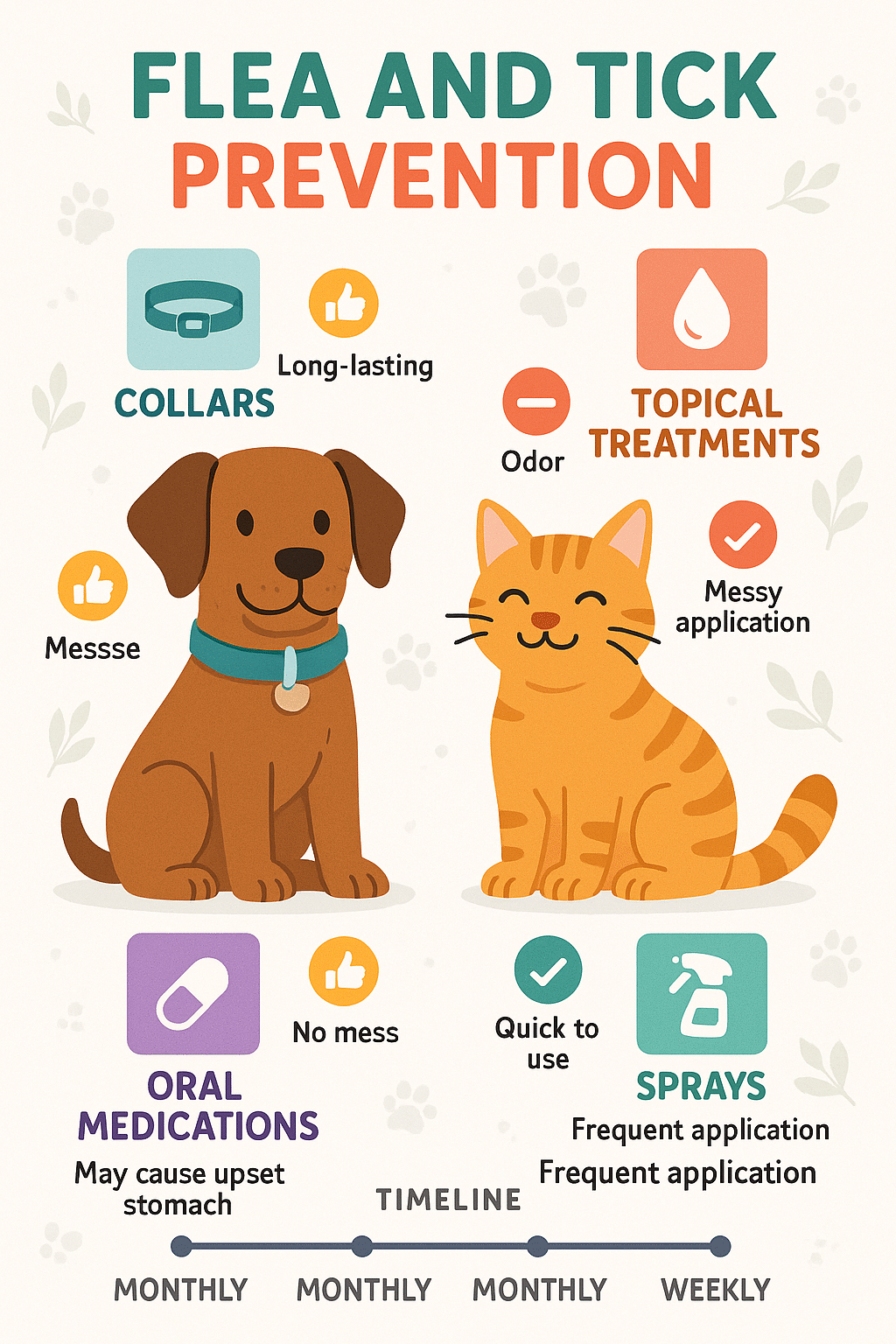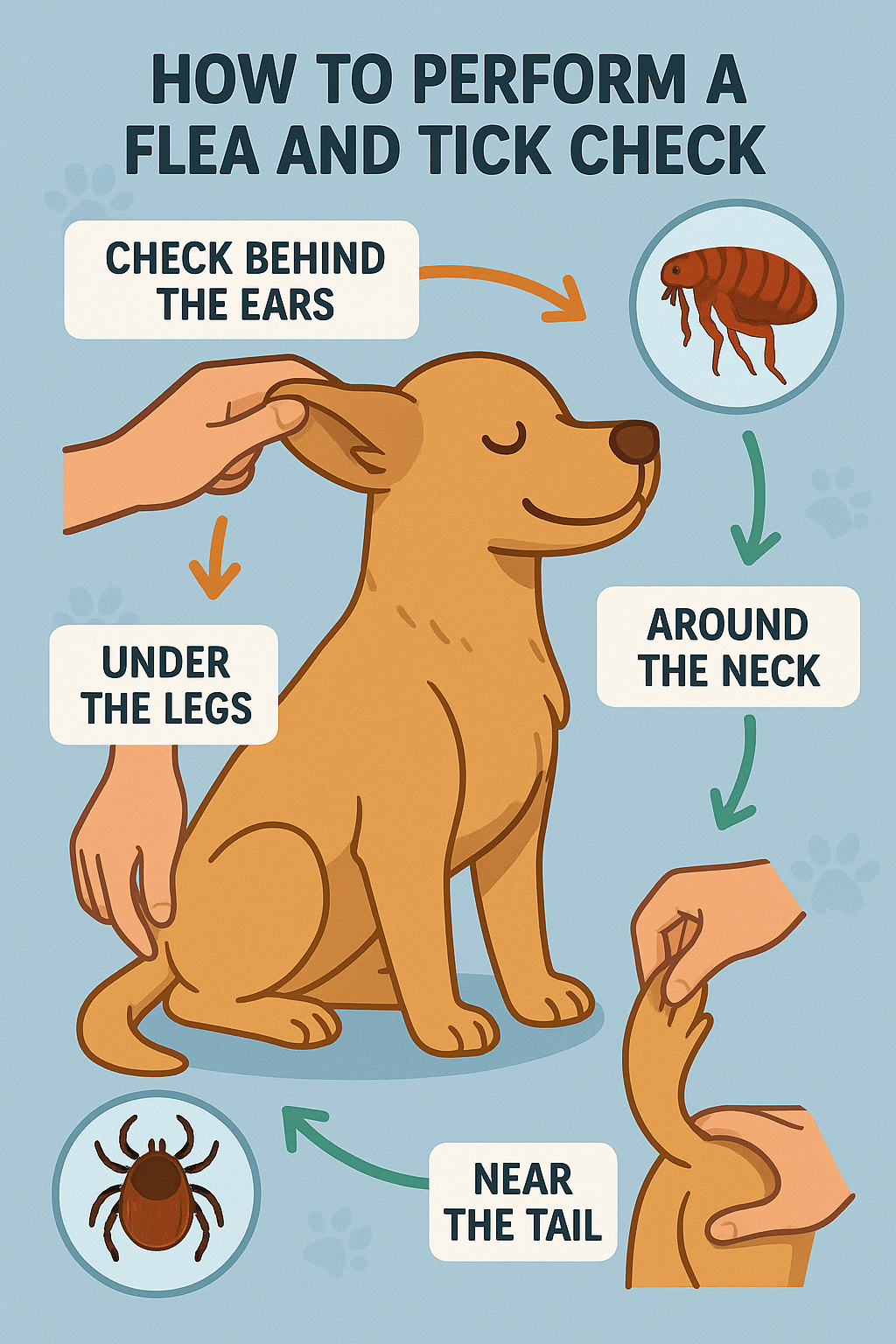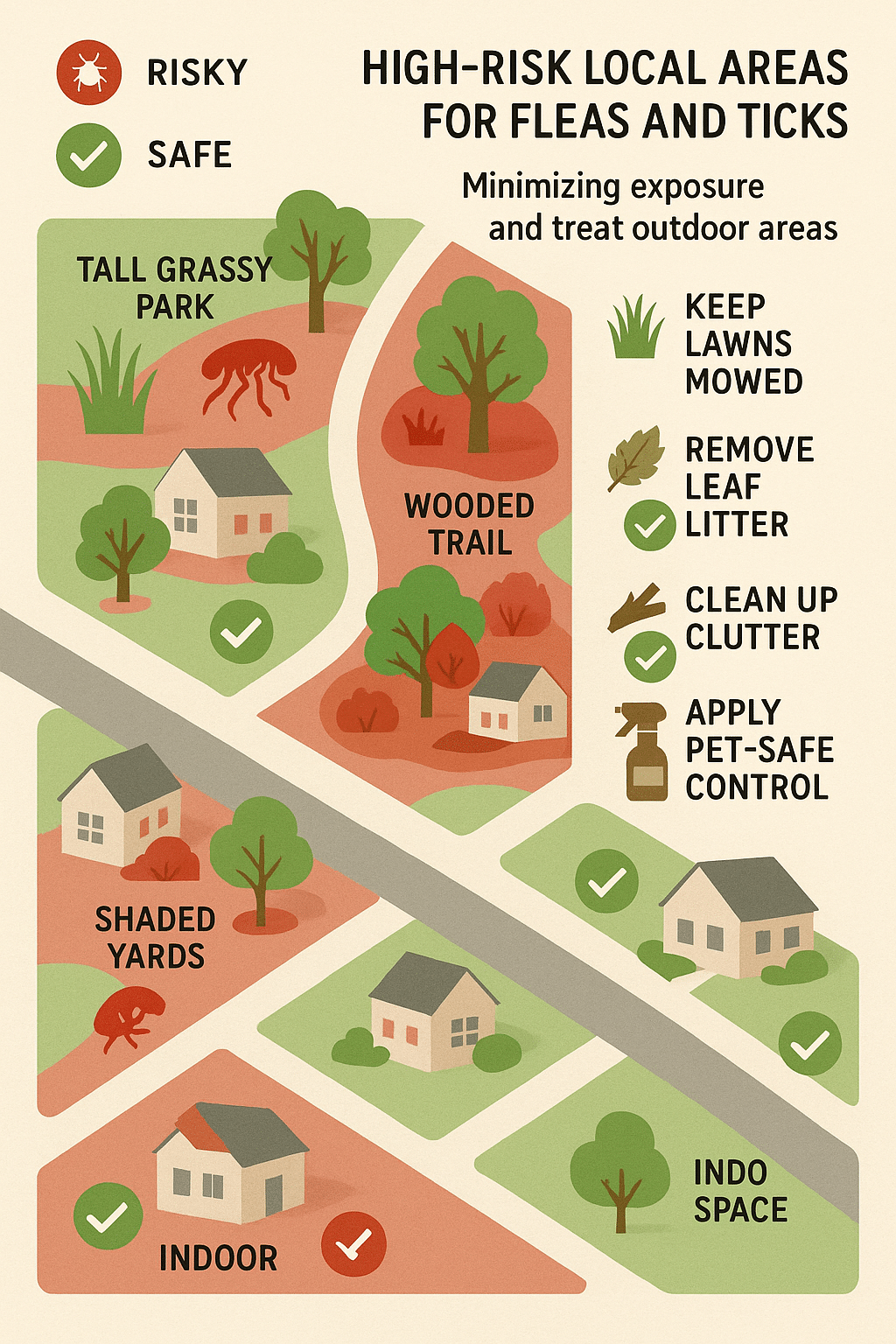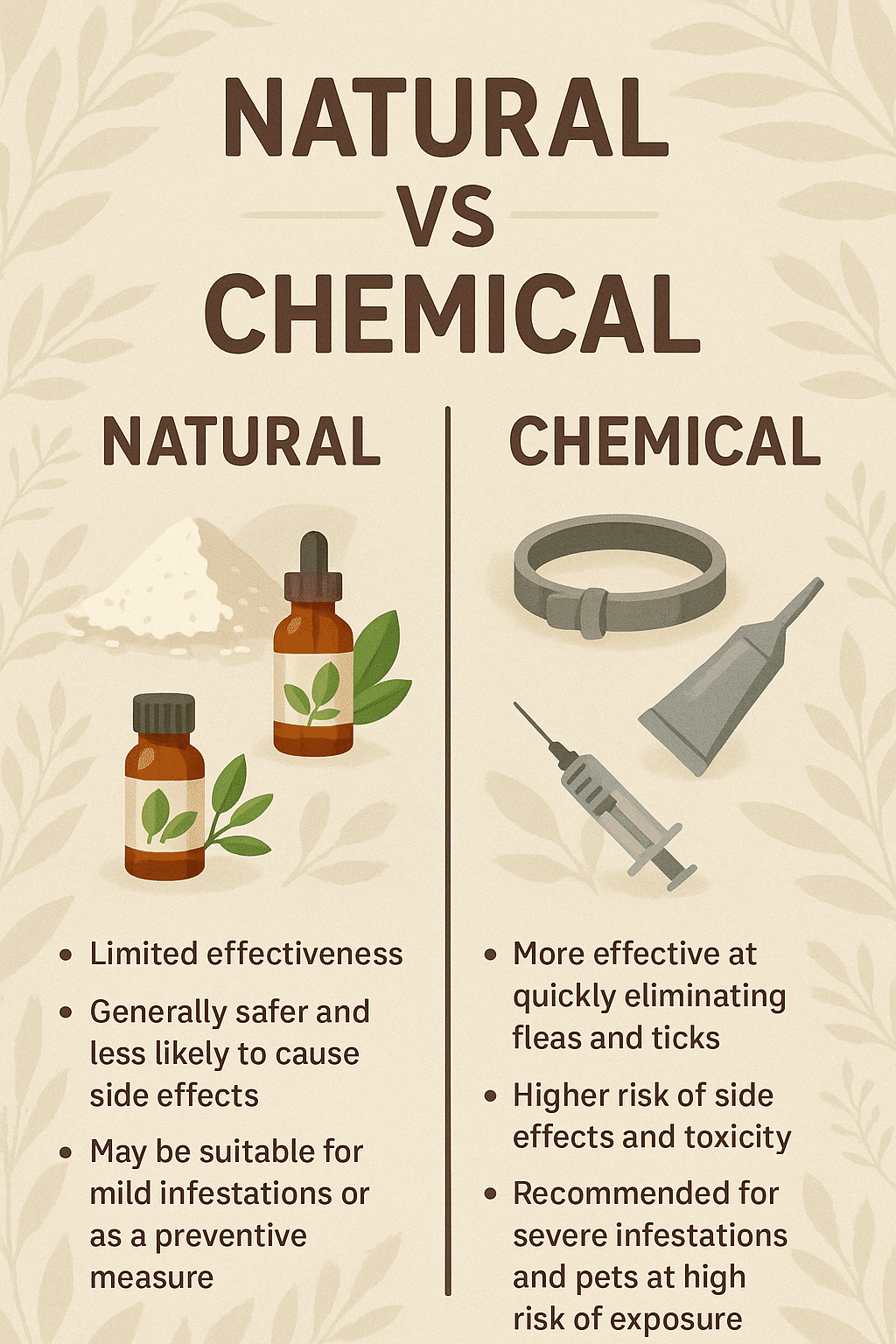Fleas and ticks—these pesky parasites are more than just an annoyance for pets and their owners; they pose serious health risks that can affect your furry family members year-round. As a dedicated pet owner, understanding flea and tick prevention isn’t just good practice—it’s essential to your pet’s well-being and comfort. Whether you’re a seasoned pet parent or new to the joys and challenges of caring for dogs and cats, this comprehensive guide will equip you with the insights and tools needed to successfully protect your pets and home from infestation.
In this detailed article, I’ll walk you through everything you need to know: from how fleas and ticks operate, spotting the early signs of their presence, choosing the right prevention products, natural alternatives, to keeping your indoor and outdoor environments pest-free. We’ll also cover tailored care recommendations for pets with special needs and how to stay consistent with prevention routines all year round.
Let’s dive into these 7 essential flea and tick prevention tips so you can confidently shield your pets from these unwanted guests—and keep your home a happy, healthy haven.
Understanding Fleas and Ticks: Risks and Life Cycles

Before tackling prevention, it’s crucial to understand your enemy: what fleas and ticks are, how they infest pets and homes, and the health issues they can cause.
How Fleas and Ticks Infest Your Pets and Home
Fleas are tiny wingless insects that thrive by feeding on the blood of animals. Adult fleas jump easily from host to host, while their eggs, larvae, and pupae contaminate carpets, pet bedding, and outdoor areas like your yard. Female fleas lay up to 50 eggs a day, turning a minor problem into a full-blown infestation incredibly fast.
Ticks, on the other hand, are arachnids that latch onto your pet’s skin for blood meals. They usually cling to grassy or wooded areas waiting to hitch a ride. Ticks have a multi-stage life cycle—larvae, nymphs, and adults—and some species can survive outdoors for months or years, posing ongoing risks.
Both pests thrive in warm, humid environments but can remain active even in cooler months in certain regions, emphasizing the need for year-round vigilance.
Common Tick-Borne Diseases to Watch Out For
Ticks aren’t just irritating—they’re dangerous. Some ticks carry pathogens that cause serious diseases in pets and humans alike. Here are a few common and concerning tick-borne illnesses:
- Lyme Disease: Caused by Borrelia burgdorferi, transmitted by the black-legged tick. It can cause joint inflammation, lameness, fever, and kidney complications in pets.
- Anaplasmosis: Another bacterial infection spread by ticks causing lethargy, fever, and joint pain.
- Ehrlichiosis: Leads to bleeding disorders, lethargy, and neurological issues.
- Rocky Mountain Spotted Fever: Can cause fever, skin rash, and organ damage.
Because these diseases can be subtle or take weeks to show symptoms, prevention is always better than treatment. Regular tick checks and fast removal are critical.
Recognizing the Signs: How to Detect Fleas and Ticks on Your Pets

Early detection is your best friend in preventing serious infestations or illness. Knowing how to spot fleas and ticks quickly can save your pet from days or weeks of discomfort.
Using Flea Combs and Tick Removal Tools
A flea comb is a fine-toothed comb designed specifically to trap and remove fleas and their eggs from your pet’s fur. I recommend combing your pets regularly, especially around the neck, tail base, and belly where fleas prefer to hide. After each stroke, inspect the comb for live fleas or tiny black “flea dirt” (flea feces), which appears like pepper specks.
For ticks, specialized tick removal tools, like tick hooks or tweezers, make a safe and efficient job of extraction. The key is to remove ticks promptly and correctly: grasp the tick as close to the skin as possible and pull straight out steadily without twisting—a quick yank can leave the mouthparts behind and cause infection.
Behavioral and Physical Symptoms in Pets
Sometimes, you’ll notice signs your pet is battling fleas or ticks before you see the parasites themselves. These may include:
- Intense scratching, biting, or licking of the skin
- Red, irritated, or scabbed areas, especially near the base of the tail, groin, or ears
- Hair loss or patchy fur
- Sensitivity or soreness on touching certain areas
- Small dark specks (flea dirt) in fur or bedding
- Visible ticks attached to skin, often near the head, neck, or paws
If your pet exhibits excessive scratching or skin irritation, it’s best to inspect thoroughly and if unsure, consult your veterinarian for diagnosis and treatment.
Year-Round Flea and Tick Prevention: Why It Matters

It’s a common misconception that fleas and ticks are only a summer problem. In reality, depending on your geographic location, these parasites can be an issue throughout the year.
Seasonal Risks and When to Increase Vigilance
In spring and summer, flea and tick populations spike as warmer weather encourages breeding and activity. During these months, it’s critical to maintain consistent flea and tick protection, including outdoor yard treatments if possible.
Fall can bring lingering risks, especially in milder climates. Pet owners should continue regular grooming and monitoring through late autumn.
Winter’s cold temperatures slow flea reproduction but do not eliminate adult fleas, and ticks can survive in protected areas or indoors. Special care should be taken for pets that spend time in heated indoor environments or travel.
Special Considerations for Winter Flea and Tick Control
Don’t slack off just because of the snow! Indoor heating creates cozy conditions for flea eggs and larvae to complete their life cycles. Year-round treatments help break the flea life cycle before spring.
Tick activity in winter varies by region—some ticks remain active if temperatures are above freezing. Indoor pets are not immune, especially if you bring them outside on walks or adventures.
So, keeping your prevention regimen consistent throughout the year is key to protecting your pets and home.
Choosing the Right Flea and Tick Prevention Products

With many flea and tick prevention options on the market, selecting the best choice can feel overwhelming. I’ll break down some of the most trusted and effective products, along with their features and usage tips.
Topical Solutions: Cheristin for Cats & Advantage Multi Topical Solution
Cheristin for Cats is an outstanding topical flea treatment specifically for cats and kittens over 8 weeks and 1.8 pounds. It starts killing fleas within 30 minutes and provides protection for up to six weeks. Many cat owners appreciate its ease of use—applying directly at the base of the neck with a quick-drying, non-greasy formula. It is widely available at retailers like PetSmart.
Advantage Multi Topical Solution works for both dogs and cats, protecting against fleas and various internal parasites, including heartworms. It’s applied monthly and comes in formulations tailored by weight, such as those sold at Walmart or PetSmart. Advantage Multi requires a veterinary prescription and is ideal for comprehensive parasite protection.
Oral Medications: NexGard Chewables and Bravecto Chewable Tablets
If your dog is a picky topical user, oral options like NexGard Chewables and Bravecto Chewable Tablets offer effective flea and tick control with convenient monthly or quarterly dosing.
-
NexGard is a monthly beef-flavored chew that kills fleas and ticks effectively. For purchase, you’ll typically need a prescription and can find it at Petco or 1800PetMeds.
-
Bravecto Chewable Tablets provide up to 12 weeks of protection with a single dose, making it perfect for busy pet owners wanting less frequent dosing. Available through retailers like PetSmart.
Both products require veterinarian guidance to ensure proper dosing based on your dog’s weight and health conditions.
Long-Lasting Collars: Seresto Flea and Tick Collar
Seresto Flea and Tick Collar is a popular and convenient option offering eight months of protection for dogs and cats. It releases steady, controlled doses of active ingredients that repel and kill fleas and ticks without harsh chemicals or fragrances. The collar is water-resistant and can be layered with topical or oral products if needed.
Available at retailers like Petco and specialty stores such as Seresto Collar Store, Seresto collars are ideal for pets with outdoor lifestyles or those sensitive to frequent applications.
Comparing Flea Collars vs Oral Medications
Flea collars like Seresto work continuously and are low-maintenance, but some pets may react to collar ingredients or chew them off. Oral medications provide systemic protection absorbed into the bloodstream, effective even for heavy infestations, but they require monthly or quarterly administration and a prescription.
Choosing between these depends on your pet’s lifestyle, health, tolerability, and your schedule. Some vets recommend combining methods during heavy infestation seasons for maximal protection.
Natural and Non-Toxic Flea and Tick Prevention Alternatives

Are you inclined toward chemical-free prevention options? There are natural alternatives that can complement or substitute chemical treatments, especially for pets with sensitivities or for owners favoring eco-friendly solutions.
Cedarcide Flea & Tick Pet Pack: A Comprehensive Natural Solution
The Cedarcide Flea & Tick Pet Pack is an all-natural kit combining several products designed to protect your pet and environment without toxic chemicals. It includes a flea + tick pet brush that dispenses Cedarcide Original Bug Spray, natural outdoor bug control sprays (in Cedarwood or Lemongrass scents), pet shampoo, and hose-end sprayer for yard treatment.
Priced at $108 for the small kit and $149 for the medium, this pack is a great holistic approach to integrated pest control. Learn more or purchase from Cedarcide’s official site.
Local pet stores like Odyssey Pets in Dallas, TX, or The Grooming Place Pet Shop in Maryland carry Cedarcide products as well, so check availability in your area.
Homemade Sprays and Environmentally Friendly Yard Care
Pet owners also enjoy making homemade sprays from natural ingredients such as essential oils (lavender, peppermint, eucalyptus), apple cider vinegar, and lemon. These DIY sprays can repel fleas and ticks when applied cautiously to pets and surroundings. However, caution is essential as some oils are toxic to pets, especially cats.
For yards, trim tall grasses, remove leaf litter, and create barrier zones with wood chips or gravel to reduce tick habitats. Planting tick-repellent flora like lavender or marigold can help, too. Always test new sprays on a small patch of skin first and consult your vet about suitable natural products.
Protecting Your Home and Yard from Fleas and Ticks
You can’t prevent infestations effectively unless you address the home environment itself.
Indoor Prevention with Hartz UltraGuard Flea and Tick Home Spray
Hartz UltraGuard Plus Flea and Tick Home Spray targets fleas, ticks, eggs, larvae, and pupae indoors, preventing re-infestation. Its 16-ounce spray is safe for indoor surfaces (but not on pets or humans) and leaves a pleasant fresh scent.
You can purchase it via Walmart or Amazon. Follow label directions strictly for safety and best results.
Lawn Maintenance and Outdoor Strategies to Reduce Tick Habitats
Ticks thrive in shady, moist, and wooded areas. To protect your yard:
- Keep grass mowed and remove brush and leaf litter regularly.
- Create clear paths of gravel or wood chips between wooded areas and your lawn.
- Limit outdoor pet access to high-risk zones.
- Apply safe outdoor flea/tick control sprays like Cedarcide’s Outdoor Bug Control.
- Avoid dense ground cover and stack woodpiles away from the home.
These strategies reduce tick populations and lower your pet’s exposure during outdoor activities.
Grooming and Regular Pet Care to Prevent Infestations
Consistent grooming habits form the backbone of effective flea and tick prevention.
Best Practices for Regular Pet Grooming and Inspection
Make a routine of combing your pets weekly with a flea comb to catch early signs of infestation. Bathing with flea-repellent shampoos can reduce parasite numbers and help soothe irritated skin. When outdoors, use quick inspections focusing on ears, neck, armpits, and belly.
Leverage tick removal tools for safe extraction whenever necessary. Maintaining a clean pet bed and washing linens frequently in hot water disrupts the flea life cycle.
Bathing Tips and Flea and Tick Prevention After Swimming
Swimming or bathing can wash off topical treatments, making your pet vulnerable to pests. After water exposure, reapply topical flea and tick medications per product instructions if recommended, or consider oral treatments that remain effective irrespective of bathing.
Use gentle, pet-formulated shampoos to avoid skin dryness or irritation, and ensure thorough drying before allowing your pet back outside.
Flea and Tick Prevention for Pets with Special Needs
Puppies, kittens, and pets with sensitive skin require special consideration.
Safe Flea and Tick Treatments for Puppies, Kittens, and Pets with Sensitive Skin
Not all flea and tick products are safe for young or sensitive pets. For example, Cheristin for Cats is labeled suitable for kittens 8 weeks and older, but products like NexGard have age and weight restrictions for puppies.
If your pet has allergies or skin sensitivities, natural options like Cedarcide or specially formulated gentle shampoos may be preferable—but always consult your vet first.
Avoid homemade remedies that may irritate or worsen skin conditions without veterinary approval.
Consulting Your Veterinarian for Personalized Care Plans
Your veterinarian should be your advisor for flea and tick prevention, especially for pets with special needs or existing health conditions. They can recommend safe products, tailor application schedules, and provide guidance on managing infestations safely.
Don’t hesitate to ask about prescription options or newer products that might suit your pet’s lifestyle better.
Creating a Flea and Tick Prevention Routine: Scheduling and Consistency
Consistency is key to keeping fleas and ticks at bay. Establishing a routine simplifies your life and ensures ongoing protection.
Monthly Medication and Treatment Schedules
Mark your calendar for monthly topical or oral treatment dates, or set reminders if you use quarterly options like Bravecto.
Check supply levels at home and reorder early to avoid gaps. Remember, interrupting treatments gives parasites a chance to rebound.
Coordinating Indoor, Outdoor, and Pet Treatments
For full protection, synchronize pet treatments with home and yard care:
- Treat pets monthly.
- Spray indoor fabrics and carpets regularly using products like Hartz UltraGuard.
- Maintain yard control through mowing, clearing debris, and using natural sprays like Cedarcide.
A comprehensive, integrated approach greatly reduces the chance of reinfestation.
Local Flea and Tick Exterminator and Pet Treatment Services
Sometimes professional help is required to manage stubborn infestations.
How to Find Trusted Local Services
Look for local pest control companies or veterinarians offering integrated flea and tick management. Websites, online reviews, and referrals from other pet owners can point you to trustworthy providers.
Make sure any pest control service used is pet-safe and specifically addresses fleas and ticks.
Complementing Professional Pest Control with Home and Pet Care
Professional treatments for your home or yard work best in tandem with your pet’s own flea and tick prevention regimen. Combining efforts accelerates pest elimination and protects your pets continuously.
Q1: What is the best flea and tick prevention for dogs near me?
A1: The best products vary by pet size and health. Oral options like NexGard or Bravecto and collars like Seresto are widely recommended. Consult your local vet or a pet supply store for product availability and advice.
Q2: How can I naturally prevent fleas and ticks on my cat?
A2: Natural methods include using products like the Cedarcide Flea & Tick Pet Pack, regular grooming, homemade sprays with vet-approved essential oils, and yard maintenance. Always test products safely and consult your vet.
Q3: How do I protect my dog from fleas and ticks in winter?
A3: Continue monthly flea and tick treatments as cold weather does not completely eliminate parasites. Keep pets groomed and regularly check for ticks after walks. Use year-round products like Seresto collars or oral medications.
Q4: What are the signs my pet has fleas or ticks and how do I treat them?
A4: Signs include scratching, hair loss, flea dirt, or visible ticks on the pet. Treatment involves prompt removal of ticks with tick tools, topical or oral flea and tick treatments such as Cheristin, and cleaning the home environment with sprays like Hartz UltraGuard.
Q5: Where can I find local flea and tick exterminator and pet treatment services?
A5: Check with local veterinarians, pest control companies, or specialty pet stores for flea and tick extermination services. Always ensure treatments are safe for pets and work in harmony with your pet’s prevention plan.
- Fleas and ticks pose serious health risks and require year-round prevention.
- Regular grooming with flea combs and tick removal tools is essential for early detection.
- Choose prevention products tailored to your pet’s age, size, health, and lifestyle—topical, oral, or collars.
- Natural alternatives like Cedarcide offer effective, chemical-free pest control options.
- Maintain your home and yard environment to reduce flea and tick habitats.
- Establish a consistent monthly routine for treatments and home care coordination.
- Consult your veterinarian for personalized flea and tick prevention plans, especially for pets with special needs.
Conclusion
Protecting your beloved pets from fleas and ticks is a year-round commitment that pays off in a happier, healthier life for your furry friends and peace of mind for you. By understanding the risks these parasites pose, recognizing early signs, and selecting the right prevention products, you’re taking vital steps toward defending your pets against irritation and disease.
Remember, prevention isn’t a one-step fix but an integrated approach combining product use, grooming, environment management, and professional support when needed. Natural and chemical options exist to suit every pet’s needs and owner’s preferences.
I encourage you to develop a personalized flea and tick prevention routine today—consult your veterinarian to choose the best products like Cheristin, NexGard, or Seresto collars, and maintain a healthy home environment using solutions such as Hartz UltraGuard or the Cedarcide Flea & Tick Pet Pack.
By staying proactive and informed, you’ll ensure your pets enjoy pest-free adventures and snuggles year-round. Don’t wait—start your effective flea and tick prevention plan today!



